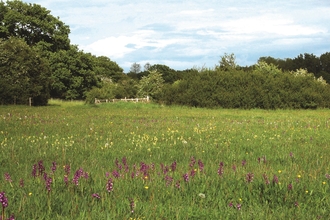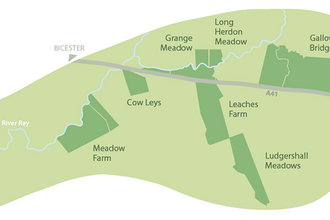With its distinctive incandescent burst of orange on the forewing, and undersides that are a rich, dark orange you could be fooled into thinking that this butterfly is easy to spot. But alas, it spends most of its time basking in the warmth of the summer sun in and around the canopies of ‘master trees,’ away from the eager eyes of butterfly enthusiasts and naturalists alike.
Cold fingers and numb toes - how to survey the rare brown hairstreak butterfly!
Brown hairstreak by Philip Precey
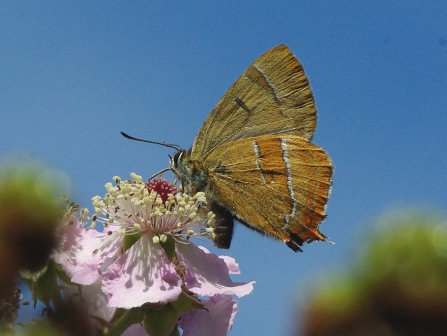
Brown hairstreak butterfly by Malcolm Brownsword
Unfortunately, this idyllic summer mirage remains as elusive as the adult brown hairstreak at the time of writing. I currently find myself amidst a winter postcard scene with frost blanketing the ground and temperatures near freezing.
Strangely enough, it’s at this point in the butterfly’s life cycle, the embryonic phase when the brown hairstreak population is hunkering down, that you’re more likely to uncover a brown hairstreak colony.
This week staff working in the Upper Ray Meadows were joined by an army of volunteers to hunt for brown hairstreak eggs at Leaches Farm. This is the most effective way of establishing a record of how well the species is doing, but is no mean feat as their eggs are about the size of a pinhead!
Brown hairstreak count by Andy Collins
With just over 3km of hedgerow to survey the team had their work cut out! But despite cold fingers and numbed toes, 50 brown hairstreak eggs were found in a number of different hedges on-site, including a rare set of quadruplet eggs.
This butterfly species lives in habitats where blackthorn, the larval food plant, is abundant, such as hedgerows and woodland. The females usually lay their eggs at a height of around 20-200cm above ground, on young blackthorn sucker growth.
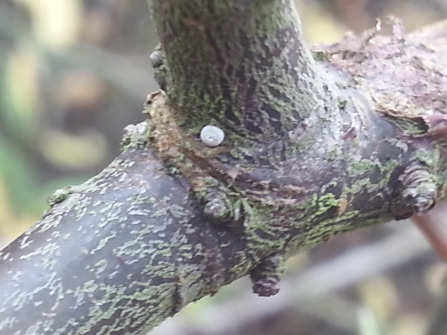
These fledgling hedgerows that act as nurseries are unfortunately under huge pressure from monoculture farming practices, which has resulted in over 50% of hedges in England disappearing over the last 60 years.
This has been compounded by the incorporation of the mechanised flail which tends to destroy the younger blackthorn growth and thus the brown hairstreak egg banks. As a result of inappropriate hedge management, the brown hairstreak has now been classified as a priority species and a focus of Biodiversity Action Plan (BAP) work to support its recovery.
As a local species centred around distinct colonies and with poor flying capabilities (even a small gap in a hedgerow can act as an untraversable barrier to the brown hairstreak), this unprecedented rise in non-traditional management methods (before mechanised cutting hedges were managed by systematic cutting and laying) can, worryingly, wipe out significant breeding colonies and fragment the remaining isolated communities.
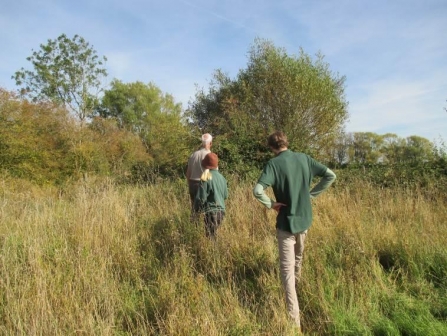
Meadow farm by BBOWT
Good news does appear in the shape of targeted conservation efforts carried out by dedicated staff and volunteers at Meadow Farm and the Upper Ray Reserves who, have fought with the blackthorn hedgerows, creating a series of “coppiced scallops” in 20m sections which will be managed and cleared periodically every 20 years.
These areas encourage vigorous regeneration of young blackthorn which in turn will hopefully yield a “baby boom” in the butterfly population over the upcoming years. The variation in hedgerow age structure created by this work will also benefit many other invertebrates and animals which call the Upper Ray Meadows their home.
Meadow Farm by Collin Williams
As we come full circle and return to our summer mirage, we look forward to the fruits of our labour and hope to glimpse a sighting of a brown hairstreak congregation. The adults are on wing from late July through to mid-September, so grab your binoculars and take a stroll around one of the Trusts wonderful sites at Upper Ray Meadows or Bernwood Meadows. You never know, they might just be feeling sociable…
Stay up-to-date with our work
Sign up below to receive the latest news from BBOWT, tips about how you can help wildlife, plus information on how you can get involved.

